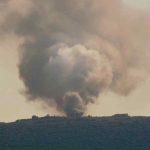Boeing
- When the 737 Max entered service in 2017, Boeing touted it as the next generation of a tried-and-tested workhorse of consumer aviation.
- The Max, a 737 with more fuel-efficient engines and updated avionics and cabins, would have longer range, a lower operating cost, and enough in common with previous models so that pilots could switch back and forth between the two with ease.
- However, two fatal crashes involving the plane within five months of each other, which killed a combined 346 people, have led to questions about the plane’s design and features. The crashes have also called attention to training standards, regulatory oversight, and pilot experience.
- Since the second crash in March 2019, the plane has been grounded around the world as Boeing works to fix what appears to be a fundamental design flaw. As the second anniversary of the first crash passes, the Max is nearing its return to passenger service.
- From the first designs, to the crashes, the groundings, all the way through today, here is the timeline of the Boeing 737 Max.
- Visit Business Insider’s homepage for more stories.
Lufthansa
In 1979, Boeing began to develop a major revamp of the 737. Making their debuts in the 1980s and early 90s, the 737-300, -400, and -500 came to be known as the 737 Classic series.
In the early 1990s, Boeing began working on another 737 update. These planes, which entered service in the late 1990s and early 2000s, were known as the 737NG. The “NG” meant “next generation.” Many of these planes are still in service today with orders still being delivered in 2019. The 737NG planes will likely continue to fly for many more years.
Boeing
The performance of the 737NG meant it was essentially a whole new aircraft family compared to the Classic, but it kept enough important commonality with the Classic that upgrading or operating mixed fleets would be easier and more cost-effective for customers. The airframe received upgrades, the wings were redesigned, and the flight deck and cabin were improved.
Between the originals, the Classics, and the NGs, the 737 has been one of the best-selling commercial jetliners of all time. More than 10,000 have been delivered worldwide.
Saul Loeb/AFP
In 2006, Boeing began to discuss a successor for the 737NG. For a while, as the plane maker mulled the next step, it considered both replacing the 737 with a brand-new airplane, or re-engining the 737NG with more efficient engines, and making other changes for a newer generation.
Reuters
By summer 2010, Boeing still hadn’t made a decision, and analysts expected that it wouldn’t until the following year.
Associated Press
Then, in December 2010, rival Airbus announced the A320neo family (neo = “new engine option”), a re-engined, more efficient version of its A320, the main competitor to the 737.
Reuters
Boeing knew the A320neo was coming, but was still taking its time to decide on the ideal, productive, and most sustainable solution to combat it — in spring 2011, the company was still leaning toward building a new plane, rather than re-engining the existing 737 airframe.
Airbus
Then, W. James McNerney, Jr., Boeing’s CEO at the time, received a call from American Airlines’ chief executive, Gerard Arpey. Arpey reportedly said that his airline was close to a deal for hundreds of Airbus narrow-body aircraft, warning that Boeing had to be more aggressive and timely to win its business.
American Airlines
Until that point, American Airlines had exclusively purchased from Boeing for more than a decade. Desperate to win the order, Boeing ditched the idea of designing a whole new airplane — which could take up to 10 years to get in the air — and instead pivoted to placing new engines on the 737 to create another new generation of the workhorse.
AP
It took a few months to finalize the design, but it wasn’t quite fast enough to prevent American Airlines from defecting. In July, the carrier announced its order for 130 A320ceo and 130 A320neo jets, with an option for 365 more. It also said that it would order 100 of Boeing’s not-quite-ready next-generation 737.
Airbus
Just one month later, Boeing announced the 737 Max family, consisting of three differently sized models: the 737 Max 7, Max 8, and Max 9.
Boeing
The design of the 737 Max had a few appeals for both Boeing and, more importantly, the airline customers to which it had to sell the planes.
Boeing
As with the transition from the 737 Classic to the 737NG, the 737 Max retained a great degree of commonality with its predecessors, meaning one pool of pilots and ground staff could work on both planes, with some supplementary training, rather than having to be certified on a new aircraft type.
Southwest Airlines
Pilots ultimately were only required to take a brief tablet-based course, rather than training in a simulator, like they would for a new plane.
Eric Piermont/AFP Photo/Getty Images
The fact that it was an existing, already certified airframe, which comprise the body and wings of the plane, only with new engines and avionics, it meant that Boeing would not have to undergo the same lengthy certification process it would for an all-new airplane.
Boeing
The desire to retain that commonality is what eventually led to the two crashes, here’s why …
REUTERS/Lindsey Wasson/File Photo
The engines on the Max were larger, positioned further forward, and higher up on the wing than the engines on the 737NG. That caused the plane to behave differently. For example, it could cause the nose of the plane to pitch upward in some situations, like low-speed flight, or flight with a high angle-of-attack, when the plane is being flown manually.
Boeing
To compensate for that, Boeing designed automated software called Maneuvering Control Augmentation System (MCAS), which would automatically activate to stabilize the pitch and nudge the aircraft’s nose back down “so that it feels and flies like other 737s.”
AP Photo/Ted S. Warren
With that in place, the Max could share the same type of rating as the 737NG, and pilots could fly the two families of 737 interchangeably — meaning airlines could have one pool of pilots capable of flying both planes.
Associated Press
Notably, however, Boeing did not include training on MCAS in the pilots’ manual, reasoning that the software would work in the background. The manual did include discussion about the trim stabilizer, however.
Ted S. Warren/Associated Press
MCAS would only activate when the plane was being hand-flown, meaning when autopilot was off. The plane would have to be flying relatively slowly, and the nose would have to be pointing high enough — or the angle-of-attack would need to be high enough — to be at risk of causing the plane to stall.
Boeing
Crucially, MCAS was designed to take effect when just a single sensor showed that the angle-of-attack was high. That meant that if one of the two sensors was damaged or faulty, it could activate.
Boeing
When the 737 Max was announced, it already had a not-quite-firm order from American Airlines. By November 2011, Boeing said that it had 700 commitments.
Joe Raedle/Getty Images
Fast-forward almost exactly four years to August 2015: the first 737 Max fuselage rolled off the factory line, and in December, the first plane — a 737 Max 8 named “Spirit of Renton — was finished. The plane was eventually delivered to Southwest.
Ted S. Warren/Associated Press
On January 29, 2016, the Max made its first test flight, performing without any unusual incidents.
Stephen Brashear/Getty Images
Following a year of test flights and data-gathering, the Max gained certification from the FAA in March 2017, followed by other global regulators later that month.
REUTERS/Lindsey Wasson/File Photo
There was a brief snag in May, when engine manufacturer CFM International warned Boeing of a possible manufacturing issue involving turbines in the engine. Boeing halted test flights to inspect the engines, but cleared them within about a week. This issue is not believed to be involved in any way associated with the crashes.
Boeing
The first 737 Max delivery was made on May 16, 2017, to Malindo Air, a subsidiary of the low-cost Indonesian carrier Lion Air.
Boeing
The first passenger flight took off on May 22.
Boeing
Deliveries picked up from there, with Norwegian Air taking the second 737 Max. It took advantage of the Max’s extended range to fly a narrow-body transatlantic nonstop between Edinburgh, United Kingdom, and Bradley International Airport in Connecticut.
Boeing
Southwest, the launch customer, took delivery of its first Max in late-August in Dallas, making it the first North American carrier to fly the jet. Today, it’s the biggest Max operator in the US.
REUTERS/Mike Blake
By May 2018 — a year after the first delivery — more than 130 Max planes were in service with 28 different airlines around the world. The Max had flown almost 42,000 flights in that time, moving about 6.5 million passengers, according to Boeing stats.
REUTERS/Lindsey Wasson
By October 27, 2018, 230 of the 737 Max planes had been delivered to customers around the world.
Aerolineas Argentinas
On October 29 at 6:20 a.m., Lion Air flight 610 took off from Jakarta, Indonesia.
The plane being used for that flight, a 737 Max 8, had given incorrect speed and altitude readings on a previous trip, but was kept in service anyway.
Reuters
As soon as the plane took off, pilots received a warning that the plane was in danger of stalling. Pilots could not ascertain their speed or altitude, and told air-traffic controllers that they were “experiencing a flight control problem.” The nose of the plane seemed like it was being forced downward.
AP Photo/Elaine Thompson
Twelve minutes into the flight, the plane crashed into the Java Sea, killing all 189 people on board.
REUTERS/Beawiharta
Indonesia’s Transportation Ministry ordered emergency inspections on all of the 737 Max 8s within the country — all were determined to be airworthy within two days.
Eddy Purwanto/NurPhoto via Getty Images
Within days of the Lion Air crash, the investigation began to focus on the MCAS technology and the pilots’ reaction to the system.
Antara Foto/Muhammad Adimaja via REUTERS
On November 6, the FAA and Boeing said that they planned to issue an Airworthiness Directive warning about possible trim stabilizer control issues due to faulty angle-of-attack indicators.
REUTERS/Stringer
Although Boeing did not call MCAS out by that name, it argued that the Flight Crew Operation Manual described the function, and how to override it.
Ed Wray/Getty Images
During all of this, airlines around the world continued flying the Max, and Boeing continued to build and deliver more of the planes.
Boeing
By March 10, Boeing had delivered 386 of the 737 Max jets.
Boeing
On March 10 at 8:38 a.m., Ethiopian Airlines flight 302 took off from Addis Ababa, Ethiopia.
Within one minute, the pilots reported a flight-control issue. A minute later, MCAS activated, pitching the nose downward. The pilots struggled to control the plane, but MCAS activated again. The pilots disabled the electrical trim tab system, per protocol, but were unable to manually turn the wheel that would change the trim by hand, partly because they had inadvertently left the engines on full thrust from takeoff.
Boeing
Six minutes after takeoff, the plane slammed into the ground at 700 miles per hour. All 157 people on board were killed.
REUTERS/Tiksa Negeri
MCAS was again cited as a contributing cause, combined with the fact that pilots could not adjust the stabilizer trim by hand. While there was an electronic system to help turn the trim wheel, that system was disabled by the same switch that disabled MCAS.
REUTERS/Tiksa Negeri
On March 10, the day of the accident, Ethiopian Airlines grounded the rest of its 737 Max aircraft.
Mulugeta Ayene/AP
On March 11, the Chinese aviation authority — the Civil Aviation Administration of China, or CAAC — ordered the country’s airlines to stop flying the plane.
Boeing
Regulators around the world followed, parking their 737 Max planes on March 11 and 12.
Boeing
The FAA was a lone holdout, initially reaffirming that the plane was airworthy. However, the agency followed its international counterparts and ordered the plane grounded on March 13.
Elaine Thompson/AP
The planes have remained grounded since, as Boeing has worked to complete a software redesign and improve recovery procedures from errant flight system activations.
David Ryder/Getty Images
After the second crash, Boeing said that it was working on a software fix, which it expected to distribute within a few weeks.
REUTERS/Lindsey Wasson
The FAA had said it expected the software to be approved by the end of March, but it announced a delay in early April, saying that it anticipated receiving “Boeing’s final package of its software enhancement over the coming weeks for FAA approval.”
AP Photo/Elaine Thompson
However, that delay stretched on as Boeing and the FAA continued to scrutinize the plane. Eventually, Boeing CEO Dennis Muilenburg said the plane maker expected to submit the final fix to the FAA in September and fly the necessary certification flights, with approval coming — and the grounding lifting — in the fourth quarter of 2019.
REUTERS/Lindsey Wasson/File Photo
In April, Boeing cut production of the plane by 10 units — from 52 to 42 per month — although it said that it would be able to ramp back up once deliveries resume. It also said that it could further cut or suspend production if the grounding continued into 2020.
AP Photo/Elaine Thompson
As the company works to get the plane flying again, airlines have been forced to cut capacity, cancel flights, and revise their expansion plans.
Southwest Airlines
Meanwhile, numerous investigations and lawsuits are ongoing, exploring how Boeing allowed it to be possible for MCAS to activate from a single faulty sensor reading, and how the FAA didn’t catch the potential flaw.
Reuters
Boeing CEO Dennis Muilenburg testified in front of Congress in late October.
Sarah Silbiger/Reuters
He said that the aviation company has improved the aircraft in such a way “that will ensure that accidents like these never happen again.” However, he admitted that Boeing made mistakes over two days of dramatic testimony.
In November, 2019, Boeing said it completed the first phase of recertification, and that it expected to begin delivering finished but grounded jets to airline customers the following month, with commercial flights approved in January.
Reuters
However, in mid-December, FAA administrator Steve Dickson said that Boeing’s timeline was “not realistic,” essentially confirming that the plane would not fly again before 2020.
Bill Clark/CQ Roll Call
That statement came after Dickson testified on Capitol Hill about the plane’s certification. One jarring detail that emerged in the hearing: After the first crash, an internal FAA analysis showed a high likelihood of future crashes, as many as 15 over the 30-40 year life of the jet. However, the FAA let the plane keep flying.
Reuters
As airlines continue to cancel Max flights — now through April — Boeing is racing to get the plane recertified as quickly as possible — while also making sure the plane is safe.
American Airlines
Boeing halts 737 Max production.
Boeing will temporarily stop production of the 737 Max plane in January. The company said no layoffs or furloughs were expected among the 12,000 employees who work at Boeing’s Renton, Washington, factory but that may not be the case for the company’s many suppliers that make parts for the plane.
Boeing CEO Dennis Muilenburg is out.
JIM WATSON/AFP via Getty Images
Dennis Muilenburg was fired from his chief executive role effective immediately on Monday, Boeing’s board of directors announced. Late into December, the company continued to struggle with the 737 Max crisis as it prepares to enter 2020 with a temporary production halt in place on the 737 Max line.
Despite leaving with no severance, Muilenburg still took home $62 million from a variety of other “contractually entitled” benefits.
In January 2020, under new CEO David Calhoun, production at Boeing’s Renton, Washington 737 factory was officially halted.
Following the holiday break, Boeing officially halted production at the factory. Although Boeing’s own employees were temporarily reassigned to other tasks and teams, the halt led to a ripple effect of economic damage through Boeing’s global supply chain, with companies big and small forced to lay off workers.
As Boeing revealed its 2019 financial results, it became clear just how impactful the 737 Max calamity has been for the company.
Reuters
Boeing had its worst year in at least three decades in terms of aircraft orders and deliveries, losing more aircraft orders than were placed for a net negative. That caused Boeing to lose the title of world’s biggest airplane-maker to rival Airbus.
The company also posted its first full-year loss in more than 20 years.
Boeing’s shares slid, the president described the company as “disappointing,”
Treasury Secretary Mnuchin said that the grounding could shave half a point from the country’s GDP in 2020.
Also in January, internal Boeing emails and messages surfaced in which employees mocked the FAA, airline customers, and discussed safety concerns related to the 737 Max.
AP Photo/Elaine Thompson
The emails provided more ammunition for Boeing’s critics, who said they were evidence of a systemic problem with both the company and the airplane.
“This airplane is designed by clowns who in turn are supervised by monkeys,” one employee wrote in an instant message, while another wrote in 2018 that “I still haven’t been forgiven by God for the covering up I did last year.”
Meanwhile, foreign object debris, or FOD, has been found in stored 737 Max planes, indicating a major quality control problem.
REUTERS/Lindsey Wasson
Each of the 400 stored airplanes will have to be inspected, although Boeing said this should not impact the plane’s return to service.
As the two-year anniversary of the Lion Air 610 crash passes, the 737 Max remains grounded around the world. As the coronavirus pandemic decimated demand for air travel and squeezed airlines’ finances, this has not necessarily been a bad thing for carriers.
REUTERS/Lindsey Wasson
But the 737 Max is poised to make its return, 20 months after the global fleet was grounded.
United Airlines
Virtually every major step in the recertification process has been completed as of late-October.
Test flights have been completed with Boeing’s proposed fixes, and several training reviews are near completion. The FAA is expected to lift the grounding order in the coming days or weeks, and American Airlines has said it could fly the plane in commercial service as soon as December 29.
While airlines will have a lot of leg work to do before putting the plane back into service, the incredible grounding of the 737 Max is almost over, although investigations, lawsuits, and hearings are expected to continue for years.
Powered by WPeMatico






